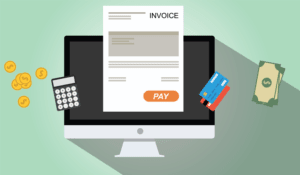Sorry, nothing in cart.
Balance Sheet vs Profit and Loss Statement: Whats the Difference?
- By hasan özdemir
- |
- Bookkeeping
- |
- 0 Comment
If a GL account includes sub-ledgers, they are called controlling accounts. In order to simplify the audit of accounting records or the analysis of records by internal stakeholders, subsidiary ledgers can be created. Using a ledger, you can maintain an accurate record of your business’s financial transactions, generate financial reports, and monitor which accounts are found on an income statement business results. Both the accounting journal and ledger play essential roles in the accounting process. Bookkeepers primarily record transactions in a journal, also known as the original book of entry. The ledger might be a written record if the company does its accounting by hand or electronic records when it uses accounting software.

Realized Profits and Loss
The income statement shows the performance of the business throughout each period, displaying sales revenue at the very top. The statement then deducts the cost of goods sold (COGS) to find gross profit. The income statement will also https://www.bookstime.com/ account for other expenses, such as selling, general and administrative expenses, depreciation, interest, and income taxes. The difference between these inflows and outflows is the company’s net income for the reporting period.
Recording Transactions
The trial balance is checked for errors and adjusted by posting additional necessary entries, and then the adjusted trial balance is used to generate the financial statements. The balance sheet demonstrates how all assets, liabilities, and shareholders’ equity are accounted for. The income statement, also known as the profit and loss statement, shows where a company’s profits and expenses came from and went over the period. The company’s bookkeeper records transactions throughout the year by posting debits and credits to these accounts. The transactions result from normal business activities such as billing customers or purchasing inventory. The three financial statements are (1) the income statement, (2) the balance sheet, and (3) the cash flow statement.
What are the Three Financial Statements?
The GL accounts will possess a list of all transactions involving that specific account. These entries will correspond with the company’s journal entries– which record all increases and decreases to accounts. An accounting ledger is part of the bookkeeping system where a business records all its financial transactions. A business will create separate categories for such transactions- these are known as accounts. All accounts of a company will be listed and contained within the general ledger, or principal book of accounts.

Resources for YourGrowing Business
- CFI is on a mission to enable anyone to be a great financial analyst and have a great career path.
- On January 31, after all of the cash journal entries post, the general ledger lists the ending cash balance.
- Posting is the process of transferring the all the transactions to the ledger.
- It is these documents that reflect the overall financial position of a company.
- Once reviewed as a group, these financial statements should then be compared with those of other companies in the industry to obtain performance benchmarks and understand any potential market-wide trends.
To best analyze the key areas of the balance sheet and what they tell us as investors, we’ll look at an example. Balance sheets are built more broadly, revealing what the company owns and owes, as well as any long-term investments. The top section contains current assets, which are short-term assets typically used up in one year or less. Therefore, everyone within the company network can access the ledger at any point and make a personal copy of the ledger, making it a self-regulated system. This mitigates the risks that Centralized General Ledgers have from having one source control the ledger.

Shareholders’ equity

Similar ledger accounts can be made for other balance sheet components such as payables, inventory, equity capital, non current assets and so on. Balance Sheet ledger accounts are maintained in respect of each asset, liability and equity component of the statement of financial position. In accounting, a General Ledger (GL) is a record of all past transactions of a company, organized by accounts. General Ledger (GL) accounts contain all debit and credit transactions affecting them. In addition, they include detailed information about each transaction, such as the date, description, amount, and may also include some descriptive information on what the transaction was. In this instance, one asset account (cash) is increased by $200, while another asset account (accounts receivable) is reduced by $200.
Additional Resources
Cash flow statement
- This software ensures the general ledger will sort all transactions through the proper accounts to create accurate financial records.
- Income statement accounts start with an opening balance of zero because revenues and expenses should have been closed to retained earnings at the end of the prior period.
- The dollar amount of total debits must equal total credits in the double-entry accounting system.
- CFI is the global institution behind the financial modeling and valuation analyst FMVA® Designation.
- Transactions are posted to individual sub-ledger accounts, as defined by the company’s chart of accounts.
- You can use the account balances in the general ledger to generate the trial balance.
- Companies publish P&L statements annually, at the end of the company’s fiscal year, and may also publish them on a quarterly basis.

Bir yanıt yazın